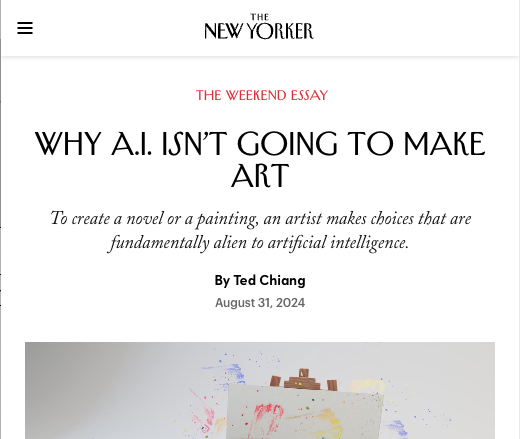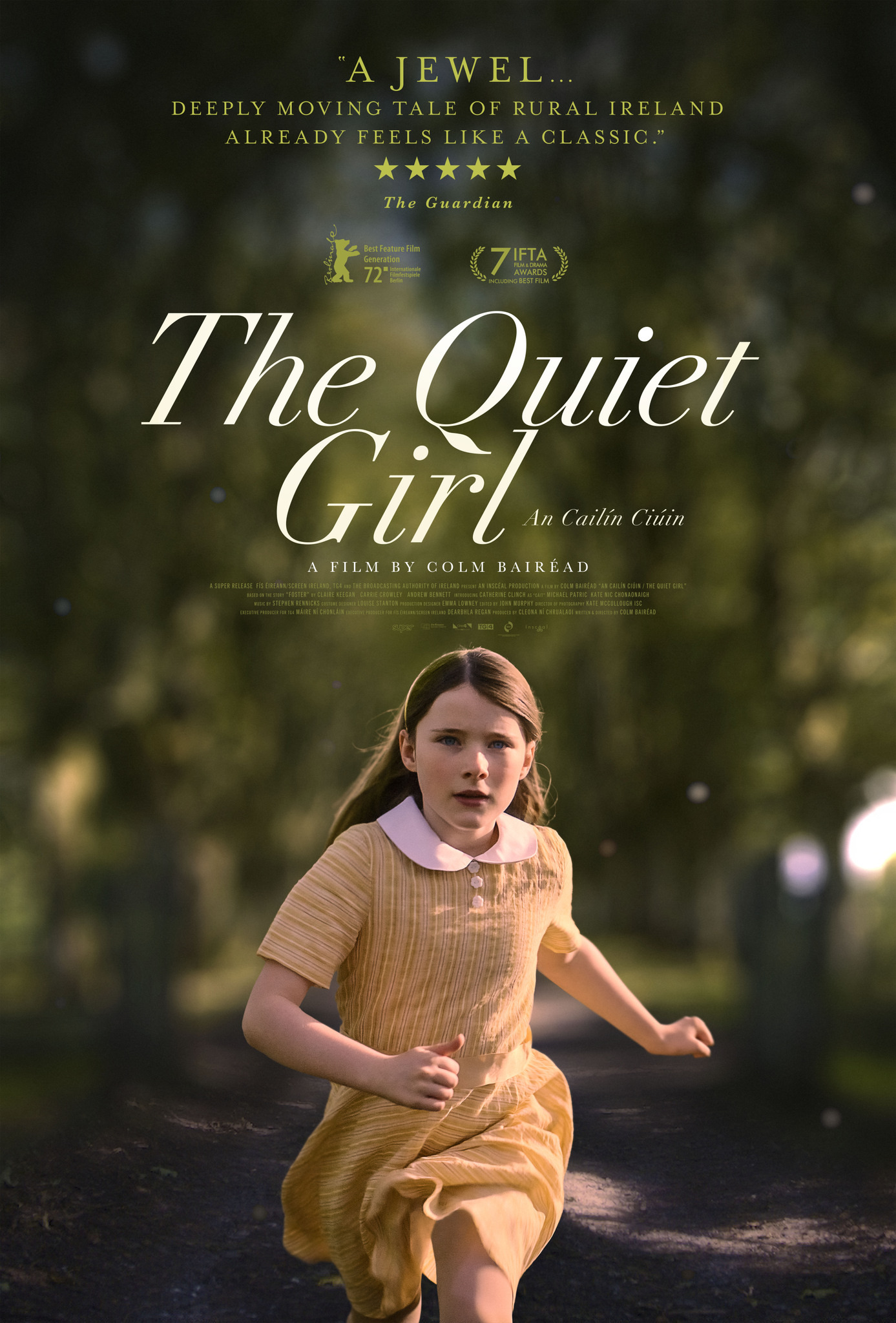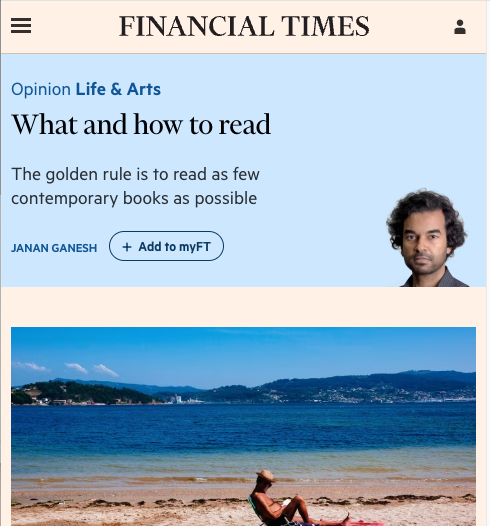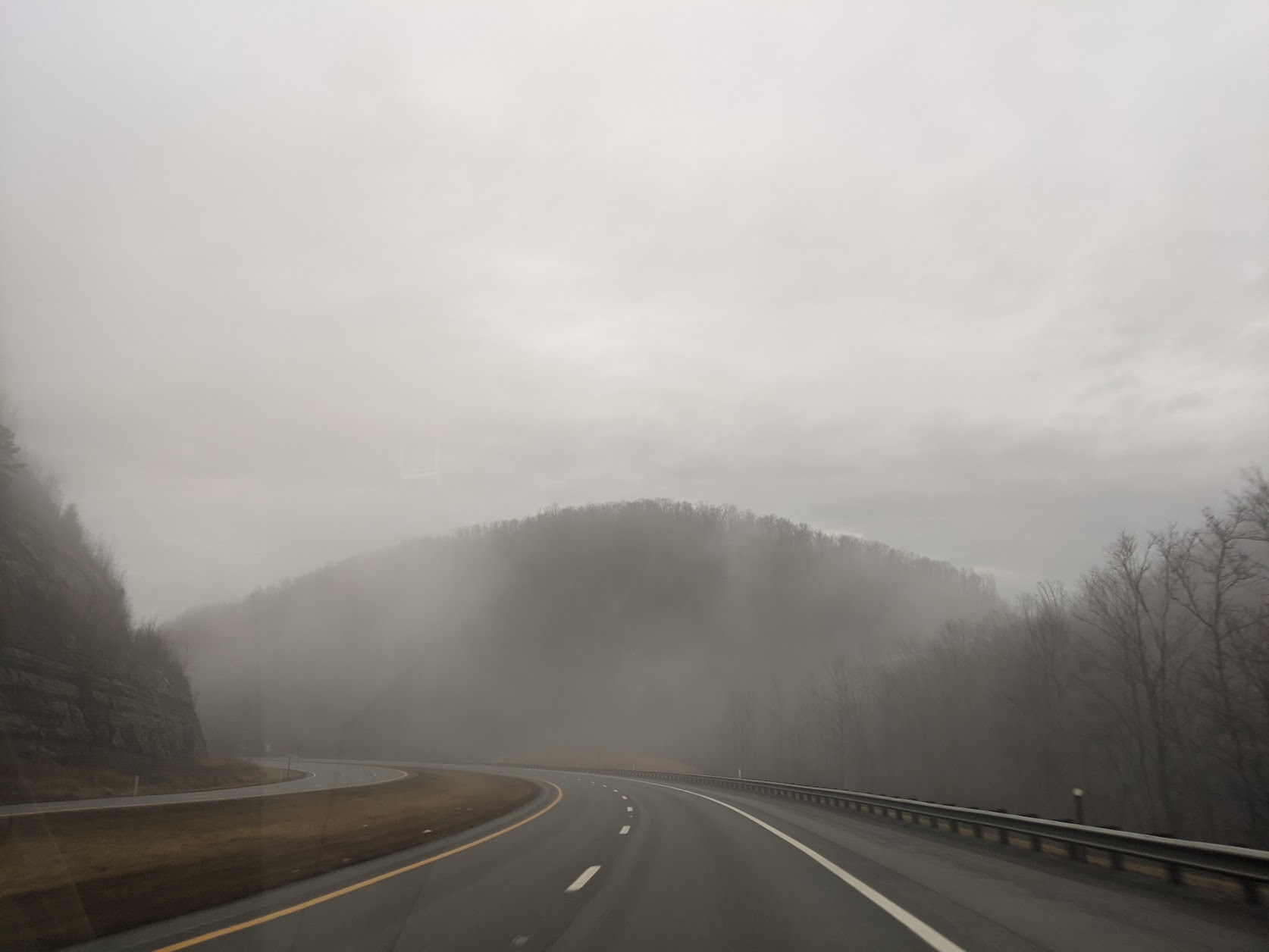One of the best thinkers on the topic is back with another brilliant piece
Ted Chiang in The New Yorker on why AI is never going to make art anytime soon (archive link):
Art is notoriously hard to define, and so are the differences between good art and bad art. But let me offer a generalization: art is something that results from making a lot of choices. This might be easiest to explain if we use fiction writing as an example. When you are writing fiction, you are—consciously or unconsciously—making a choice about almost every word you type; to oversimplify, we can imagine that a ten-thousand-word short story requires something on the order of ten thousand choices. When you give a generative-A.I. program a prompt, you are making very few choices; if you supply a hundred-word prompt, you have made on the order of a hundred choices.
Here’s the crux of his idea:
An artist—whether working digitally or with paint—implicitly makes far more decisions during the process of making a painting than would fit into a text prompt of a few hundred words.
I’ve seen some pieces disagreeing with this take, and suggesting that AI is more like an audio sampler or a synthesizer keyboard, but to me, they’re failing to distinguish where the artistry lies. The keyboard or sampler doesn’t threaten to replace the artist, any more than power tools replace builders. But that’s what the AI promoters are saying: this new drill will put the contractor out of business. It’s ridiculous:
The companies promoting generative-A.I. programs claim that they will unleash creativity. In essence, they are saying that art can be all inspiration and no perspiration—but these things cannot be easily separated. I’m not saying that art has to involve tedium. What I’m saying is that art requires making choices at every scale; the countless small-scale choices made during implementation are just as important to the final product as the few large-scale choices made during the conception. It is a mistake to equate “large-scale” with “important” when it comes to the choices made when creating art; the interrelationship between the large scale and the small scale is where the artistry lies.
The whole piece is full of novel ideas and clever turns of phrase, you should read it in full.
You might know Chiang as the guy who wrote the story that the film Arrival is based on. He’s published two short story collections that I recommend without hesitation, even if you’re not a science fiction reader. Most of his stories use speculative elements to explore human themes — his stories are full of soul and emotion.
One of my favourite ideas about AI was from another piece from Chiang in FT:
“There was an exchange on Twitter a while back where someone said, ‘What is artificial intelligence?’ And someone else said, ‘A poor choice of words in 1954’,” he says. “And, you know, they’re right. I think that if we had chosen a different phrase for it, back in the ’50s, we might have avoided a lot of the confusion that we’re having now.”
So if he had to invent a term, what would it be? His answer is instant: applied statistics.
Applied statistics is the perfect name for what these LLMs are doing. There’s nothing intelligent about it.
Chiang hasn’t written any short stories in several years, but his nonfiction pieces are arguably even more compelling than his fiction.
EDIT: Lincoln Michel says what I tried to say here:
Is an AI output art? Maybe or maybe not. But if it is, surely the prompter isn’t the artist. They aren’t the one making the choices.
GenAI might be new technology, but “prompting” a work of art is as old as time. An aristocrat commissions a portrait, a production company hires a musician to write a theme song, a magazine editor sends out a cover image assignment to an illustrator, a teen asks their artsy friend to draw Super Mario smoking weed, or an editor sends out a submission call with for a themed anthology. Plenty of art both high and low has been made with prompts. The only thing new is the claim that the prompter—the person who didn’t actually make the thing—is somehow the artist.
It’s a great piece that builds on Chiang’s. Read it too.






